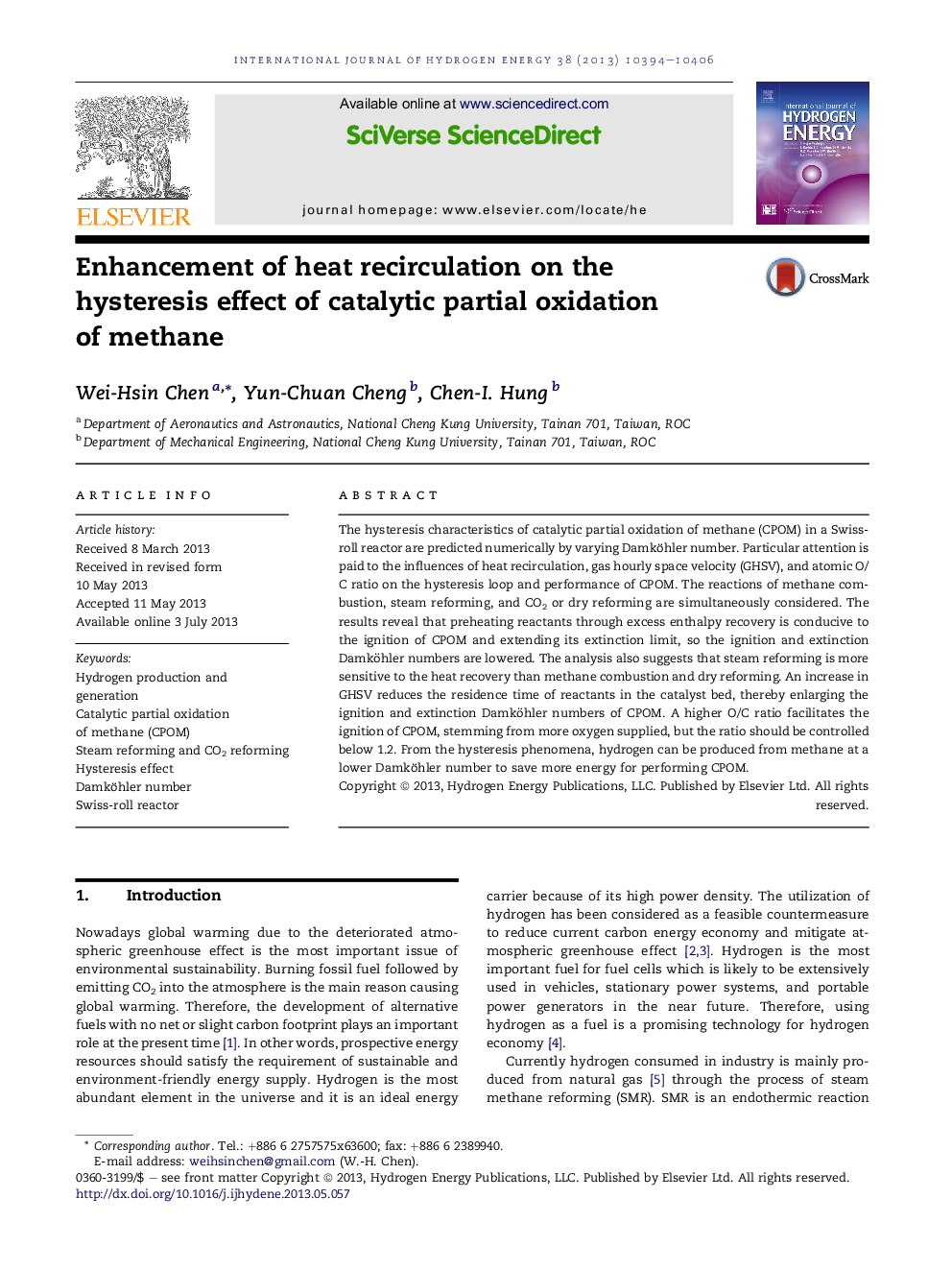| Article ID | Journal | Published Year | Pages | File Type |
|---|---|---|---|---|
| 7722149 | International Journal of Hydrogen Energy | 2013 | 13 Pages |
Abstract
The hysteresis characteristics of catalytic partial oxidation of methane (CPOM) in a Swiss-roll reactor are predicted numerically by varying Damköhler number. Particular attention is paid to the influences of heat recirculation, gas hourly space velocity (GHSV), and atomic O/C ratio on the hysteresis loop and performance of CPOM. The reactions of methane combustion, steam reforming, and CO2 or dry reforming are simultaneously considered. The results reveal that preheating reactants through excess enthalpy recovery is conducive to the ignition of CPOM and extending its extinction limit, so the ignition and extinction Damköhler numbers are lowered. The analysis also suggests that steam reforming is more sensitive to the heat recovery than methane combustion and dry reforming. An increase in GHSV reduces the residence time of reactants in the catalyst bed, thereby enlarging the ignition and extinction Damköhler numbers of CPOM. A higher O/C ratio facilitates the ignition of CPOM, stemming from more oxygen supplied, but the ratio should be controlled below 1.2. From the hysteresis phenomena, hydrogen can be produced from methane at a lower Damköhler number to save more energy for performing CPOM.
Keywords
Related Topics
Physical Sciences and Engineering
Chemistry
Electrochemistry
Authors
Wei-Hsin Chen, Yun-Chuan Cheng, Chen-I. Hung,
